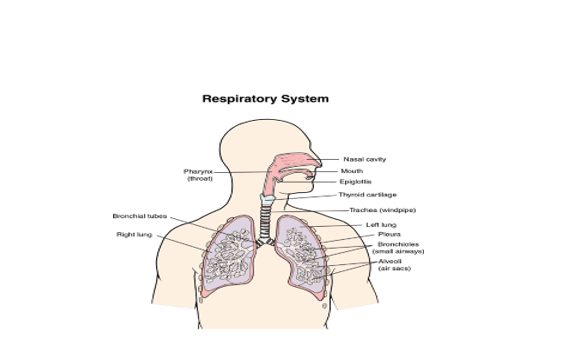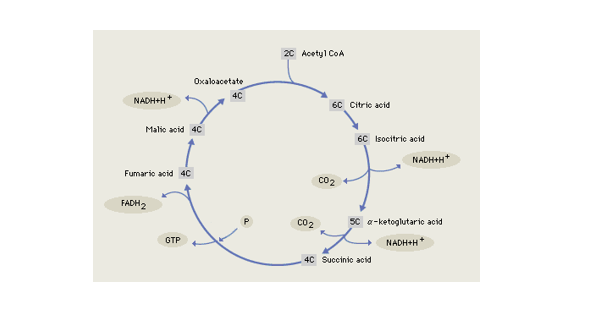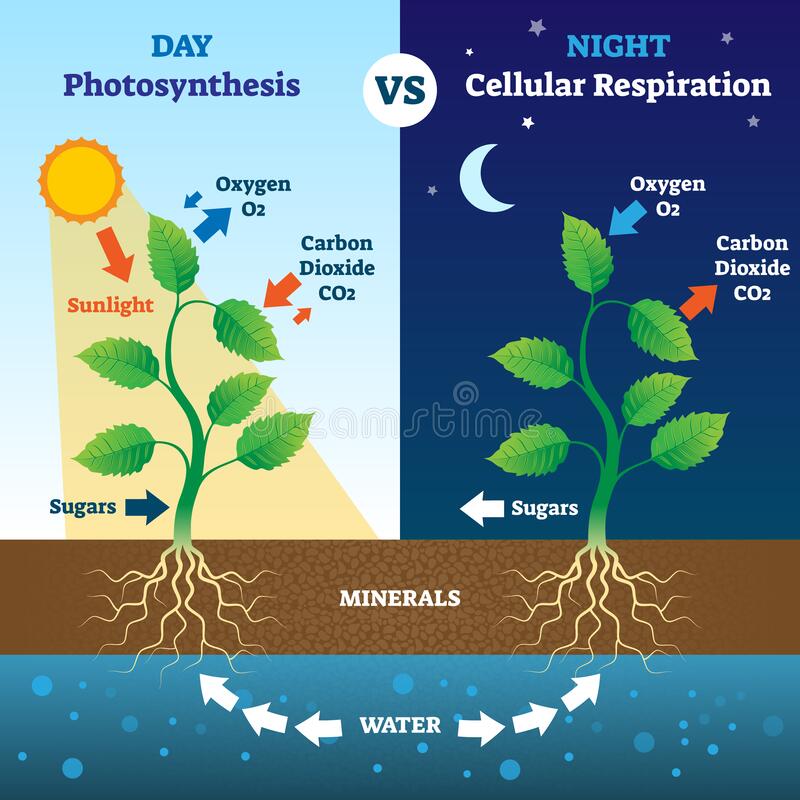Back to: BIOLOGY SS2
Welcome to Class !!
We are eager to have you join us !!
In today’s Biology class, We will continue learning about Respiratory system as we look at the Respiratory system of Mammals and Plants. We hope you enjoy the class!
RESPIRATORY SYSTEM OF MAMMALS & RESPIRATION IN PLANTS
CONTENT
- Respiratory System in Mammals: Mechanism of Respiratory System
- Process of Inhalation / Inspiration in man
- Characteristics
- Process of Expiration in Man
- Internal Aerobic Respiration
- Respiration in Plants (Stomata & Lenticels)
- Mechanism of Gaseous Exchange in Plants.
RESPIRATORY SYSTEM IN MAMMALS
The respiratory system of mammals is the most complex of all respiratory systems. It comprises of a pair of lungs enclosed in the thorax and connected to the outside by series of branched air tube.
In human beings, air can be drawn in through the mouth or nose. Both lead into the pharynx a short passageway which branches at the end into two directions. One leads to the digestive tract while the other leads to the larynx (voice box) and the lower air pathway. The entrance of the larynx is called the glottis and it is covered by a cartilaginous flap (epiglottis) which prevents food from entering the windpipe. For air to enter larynx, the glottis must remain open.
The trachea (windpipe) branches into two bronchi. The presence of cartilaginous rings in the trachea and bronchi prevents them from collapsing when the air pressure in them is low. Each bronchus leads to the lung where it branches into small tubes called bronchioles. The alveoli are richly supplied with blood capillaries and are sited or surface where gaseous exchange takes place.
As oxygen follows this pathway from the outside to the lungs, C02 is released out from the lungs to the outside via the same pathway.
MECHANISM OF RESPIRATION IN MAMMALS
This entails two phases namely external and internal respiration
External Respiration (Breathing)
This is the taking in of oxygen (inspiration or inhalation) and giving out of C02 and water vapour (expiration or exhalation).

EVALUATION
- List the two phases of respiration in a named mammal
- Discuss briefly the process of external respiration
MECHANISM OF INSPIRATION OR INHALATION IN MAN
- The intercostals muscle contract
- The rib is moved upward and outward
- The diaphragm becomes flattened
- There is an increase in the volume of the thoracic cavity
- Consequently air is drawn from the nostril to the trachea, bronchi, bronchioles, and finally to the alveoli.
MECHANISM OF EXPIRATION OR EXHALATION IN MAN
- The intercostals muscle relax
- The ribs are moved downward and inward
- The diaphragm becomes dome shape
- There is a decrease in the volume of the thoracic cavity.
- Consequently, air is drawn from the alveoli, bronchioles, bronchi, and trachea.
- Consequently, air containing waste products like CO2 and water vapour from inside the alveoli or lungs are forced out through bronchioles, bronchi, trachea, and finally to the exterior through the nose.
Inhaled and exhaled air is made up of the following
Air Component Inhaled Air Exhaled Air
Oxygen 21% 16%
Carbon dioxide 0.03% 4%
Nitrogen 78% 78%
Water vapour variable saturated (higher)
EVALUATION
- Differentiate between inhalation and exhalation in mammals.
- Write a short note on ‘gaseous exchange in man’.
CELLULAR (INTERNAL) RESPIRATION
The oxidation of glucose to release energy is known as cellular respiration and it occurs in the mitochondria (powerhouse) of all living cells.
Within the cytoplasm of the cells, one molecule of 6-carbon sugar is broken down into two molecules of 3-carbon pyruvate catalysed by the enzymes in the cytoplasm. This process does not require oxygen. Each pyruvic acid is further oxidized completely to carbon dioxide and water in the mitochondria. The breakdown of glucose to pyruvic acid is termed glycolysis while series of chemical reactions occurring within the mitochondrion, responsible for the final breakdown of food molecules to form carbon dioxide, water, and energy carried out by seven enzymes is known as the Krebs cycle (citric acid cycle). Most of the ATPs are generated in the Kreb cycle (36 ATP). A total of 38 ATP molecules are formed when one molecule of glucose is completely oxidized.

KREB CYCLE
AEROBIC AND ANAEROBIC RESPIRATION
In most cells, cellular respiration takes place in the presence of oxygen and this is known as aerobic respiration. The largest amount of ATP possible is generated through it from one molecule of glucose (38 ATP).
In some other organisms, the cells get energy from breaking down glucose in the absence of oxygen, this is known as anaerobic respiration. Only two ATPs are produced. Lactic acid often results from anaerobic respiration instead of pyruvic acid in animals which make it useful in the production of yoghurt. In plants, alcohol and carbon(IV)oxide are produced.
EVALUATION
- What is internal respiration?
- Differentiate between aerobic and anaerobic respiration
RESPIRATION IN PLANT
There is no special respiratory organ in plants. Gases move in and out the plant through the stomata and lenticels
- Stomata: They are tiny pores in the lower epidermis of leaves. Each stoma is enclosed within two bean-shaped cells known as guard cells. It regulates the opening and closing of the stomata,
- Lenticels: These are breathing pores or tiny opening found in the bark of older stems. Lenticels consist of a loose mass of small thin-walled cells which permits easy diffusion of gasses in and out of the plant.
MECHANISM OF GASEOUS EXCHANGE IN PLANTS
Oxygen, carbon dioxide, and water vapour are released by simple diffusion process in plants. Oxygen diffuses into plants through the stomata and lenticels while CO2 and water vapour diffuse out of the plant through the same opening. This is facilitated by the difference in the concentration gradient of these gases. The plant takes in oxygen mostly during the night and gives out carbon dioxide and water vapour during the day due to photosynthetic activities of the plant. Oxygen is the by-product of photosynthesis.

The opening and closing of the stomata is regulated by the guard cells. When the guard cell is turgid, the stomata open but when the cells become flaccid the stomata are closed.
GENERAL EVALUATION
- State the organs of respiration in plant
- Describe the gaseous exchange in plants.
- What is (a) glycolysis (b) Krebs’s cycle?
- Define photosynthesis.
- Explain the process that leads to the production of yoghurt
Reading Assignment
College Biology, Chapter 8, Page 170 – 185
WEEKEND ASSIGNMENT
SECTION A
- During anaerobic respiration, how many ATP are produced? A. 2 ATP B. 3 ATP C. 4 ATP D. 5 ATP
- The cartilaginous flap which prevents food from entering the windpipe is A. glottis B. epiglottis C. larynx D. oesophagus
- The gaseous exchange in mammals takes place in the A. trachea B. bronchus C. alveolus D. lungs
- When the guard cell is turgid, the stomata A. opens B. closes C. shrinks D. breaks
- In strenuous activities in the absence of oxygen, glucose is broken down into A. pyruvic acid B. carbon dioxide C. lactic acid D. alcohol
SECTION B
- Explain fermentation.
- Differentiate between internal and external respiration.
We have come to the end of this class. We do hope you enjoyed the class?
Should you have any further question, feel free to ask in the comment section below and trust us to respond as soon as possible.
We have come to the end of this term. It’s been a remarkable journey and we are glad that you have made it this far. For making it this far, we commend you for being resilient, you have taken charge of your education and future.
The Journey still continues though, we are moving on to Third Term. we hope to meet you there.
